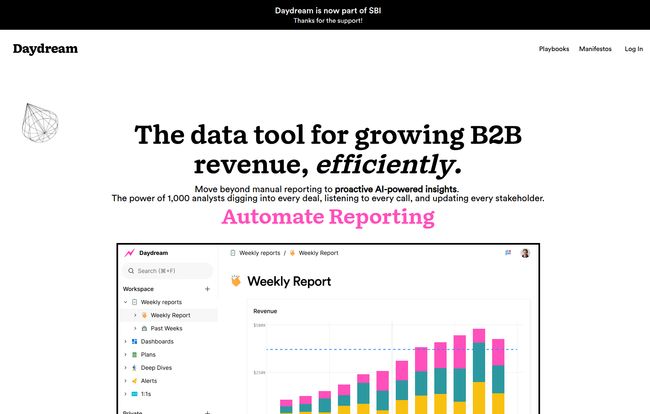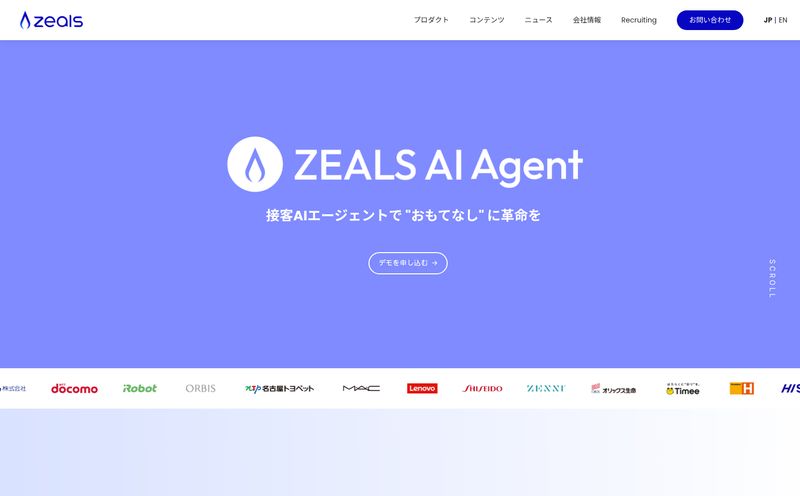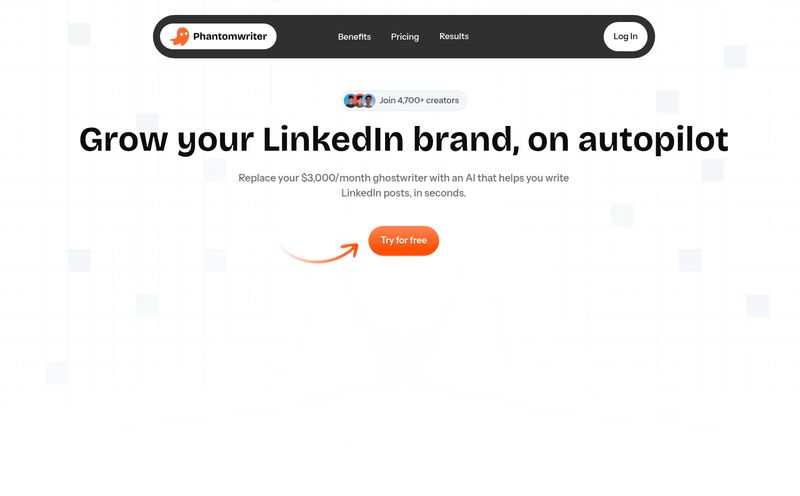You, me, and the ever-present data reporting hamster wheel. Every go-to-market (GTM) leader, founder, or finance person I know is drowning in data but starving for actual insights. We spend hours pulling numbers from Salesforce, HubSpot, Stripe, and a dozen other platforms, trying to stitch together a story. By the time we’ve built the dashboard, the data's already stale. Sound familiar? Yeah, I thought so.
So, when I started hearing whispers in SEO and marketing Slacks about a tool called Daydream, my ears perked up. The buzz was about an AI-powered data tool that promised to be the 'teammate you’ve always wanted'. It was being used by the cool kids of tech—Figma, Uber, dbt. The promise was intoxicating: deep GTM insights without lifting a finger.
But there’s a catch. A big one. And it’s what makes this whole thing so much more interesting.
So, What Exactly Is This Daydream Thing?
At its core, Daydream is an AI-driven data platform designed to help B2B businesses grow, well, faster. It’s not just another dashboard builder. Think of it more as a central nervous system for your revenue operations. It connects to all your disparate data sources—your CRM, your billing platform, your data warehouse—and unifies them.
The real magic, the thing they sell you on, is the AI. Daydream claims to give you the “power of 1,000 analysts.” Instead of you having to be a SQL wizard or a spreadsheet guru, you can ask questions in plain English. Questions like, “Which marketing channels had the best lead-to-close rate last quarter?” or “Show me the pipeline generated by the East coast sales team.”
It’s built for collaboration, aiming to be the single source of truth that powers everything from executive reports and board decks to one-on-one meetings between a sales manager and their reps. It’s a pretty compelling vision, right?

Visit Daydream
The Features That Created the Hype
When you look under the hood, you see why companies were flocking to it. It’s not just one killer feature; it’s how they all work together to solve a very real, very expensive problem.
An AI Teammate for Your Data
This is the headline act. The AI isn't just for answering questions. It’s meant to be proactive, spotting trends or anomalies in your data and flagging them for you. It’s the difference between you having to look for a needle in a haystack and having a super-powered magnet pull it out for you. For any team that feels under-resourced (which is every team), this is a massive deal.
Breaking Down Those Pesky Silos
I’ve lost count of the number of meetings I’ve been in where the marketing team's numbers don’t quite match the sales team's numbers. It’s a classic. Daydream’s collaborative workspace is designed to fix that. By having everyone—sales, marketing, finance, leadership—working from the same live data set, you eliminate those discrepancies. You’re all singing from the same, automatically updated, hymn sheet.
No More Reinventing the Reporting Wheel
We’ve all done it. Spent a weekend trying to build the perfect pipeline velocity report or a cohort analysis chart. Daydream comes with a library of best-in-class templates and playbooks. These aren't just pretty charts; they are pre-built, strategic frameworks for things like managing burn rate, tracking revenue OKRs, and preparing for a fundraise. This is a huge accelerator, especially for startups that don’t have a massive RevOps team to build this stuff from scratch.
All Your Data Under One Roof
A tool like this is only as good as the data it can access. The list of integrations is impressive: Salesforce, HubSpot, Snowflake, Stripe, BigQuery… all the usual suspects are there. The goal is to create that elusive 360-degree view of the customer and your business without a massive engineering project.
The Velvet Rope: Why Can’t You Sign Up?
Okay, so here's the twist in the story. You go to their website, all fired up and ready to hand over your credit card details, and you hit a wall. A polite, but firm, “We're not currently accepting new customers.” Even the 'Pricing' link in their footer leads to a 'Page Not Found' error.
What gives?
This is pure speculation on my part, but I've seen this movie before. There are a few possibilities:
- They're Overwhelmed with Demand: They could be a small team that hit a viral nerve and simply can't handle the influx of new customers without compromising the quality of service for existing ones. It's a good problem to have, but a problem nonetheless.
- They're in a Strategic Pivot: Perhaps they're retooling the product for a different market segment or building out a massive V2. Closing the doors gives them the space to do that without the pressure of new user onboarding.
- Acquisition on the Horizon?: When a hot startup with a killer client list suddenly goes quiet, the M&A alarm bells start ringing. A larger company (maybe even one of their integration partners like Salesforce or Snowflake) could be in the process of snapping them up.
Whatever the reason, it’s created a classic “velvet rope” effect. By making it exclusive, they've only increased the mystique and demand. It's a bold marketing move, intentional or not.
What We Can Learn From Daydream’s Playbook
Even though you can't use Daydream right now, its approach tells us a lot about where the B2B SaaS world is heading. The future isn't about more data; it's about better, more accessible insights. The era of needing a data science degree to understand your own business is ending.
Tools that embed AI and collaboration directly into the workflow are going to win. We want platforms that don’t just show us what happened, but help us understand why it happened and what we should do next. Daydream is a perfect poster child for this shift.
Is It All Sunshine and… Daydreams?
Let's be realistic. No tool is a magic wand. Even with a platform as powerful as Daydream seems to be, there are inherent challenges. I've seen teams invest heavily in a tool like this only to be disappointed, and it usually comes down to one thing: data quality.
The old saying 'garbage in, garbage out' is truer than ever in the age of AI. If your Salesforce data is a mess of duplicate contacts and inconsistent field entries, no AI in the world can give you clean insights. It'll just give you beautifully-charted garbage.
There’s also likely a learning curve. While they tout a 'no code' experience, getting a whole GTM team to change their habits and adopt a new way of working is never as simple as flipping a switch. It requires buy-in and a real commitment to changing processes.
Frequently Asked Questions
- What is Daydream?
- Daydream is an AI-powered data analytics platform designed for B2B go-to-market, finance, and leadership teams. It integrates with various business data sources to provide automated insights, reports, and a collaborative workspace.
- Who is Daydream for?
- Its primary audience includes founders, revenue leaders (in sales and marketing), and finance teams at B2B companies, particularly in the tech and startup space.
- Can I sign up for Daydream?
- Unfortunately, no. As of late 2023 / early 2024, Daydream is not accepting new customers. You can request access on their website to join a waitlist, but immediate signup is not available.
- How much does Daydream cost?
- There is no public pricing information available. The pricing page on their website is inactive, which aligns with their current status of not accepting new customers.
- What are some good alternatives to Daydream?
- If you're looking for similar functionality, you could explore a few avenues. For powerful, modern business intelligence, tools like Looker or Tableau are enterprise standards. For a more spreadsheet-native feel that's gaining traction, check out tools like Equals or Hex. Each has its own strengths, depending on your team's technical skill and specific needs.
Final Thoughts: A Tool to Watch
Daydream might be a private party for now, but its impact is being felt. It's a clear signal of the future of data-driven business strategy: collaborative, intelligent, and fast. It moves beyond passive dashboards into the realm of active, AI-powered partnership.
My advice? Don’t just wait for Daydream's doors to reopen. Start thinking about how you can adopt its principles right now. How can you clean up your data? How can you foster better collaboration between sales and marketing? How can you start asking better questions of the data you already have?
Because when the next evolution of data tools—be it Daydream or a competitor—becomes available, you'll be ready to hit the ground running. And that’s a pretty good way to accelerate.
Reference and Sources
- Daydream Official Website: https://www.daydream.co/



